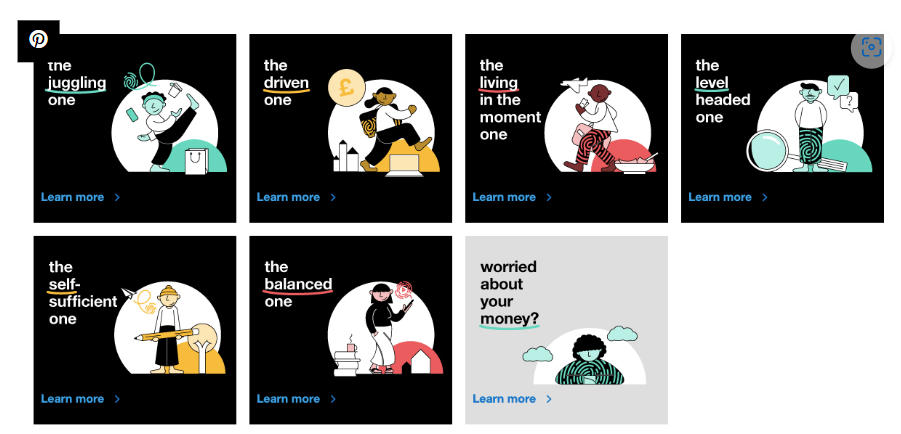As an agency that knows just how effective a well-planned and optimised inbound marketing strategy can be, we’re always on the lookout for new and exciting trends that can further enhance marketing efforts for our clients.
After all, marketing is always evolving. To stay competitive, you’ve got to keep up to date with any new marketing techniques and channels your competition might be using, and where, why and how your customers might want to be targeted.
We’ve done some horizon scanning and highlighted some key inbound marketing trends that we predict will be big in 2023, and included some advice on how brands and businesses might consider putting them to work.
Local SEO
Google is really pushing local SEO, especially for businesses with physical stores and an online presence.
In a previous blog post, we talked about how, with the rise of mobile devices and the decline of desktop usage, local SEO is critical in giving you an edge over your competitors and helping you connect with potential customers in a personal way.
Local SEO is a subset of search engine optimization (SEO). It’s the process of optimising your website for local search engines and directories so that it appears higher in the search results for queries relevant to your business.
This is important because Google uses local search (amongst other things) to determine where to rank a website in search results. It’s based on the location of the searcher and the business that they’re searching for.
Aside from the ranking benefits of employing local SEO strategies, a local SEO optimised website will provide potential customers in your area with good, easy to use information, and make you stand out from other similar local businesses. These will all increase the likelihood of sales conversions and revenue.
If that hasn’t convinced you, Reboot has some pretty amazing facts relating to local SEO, including that there has been a ‘900% increase in “near me tonight/today” searches (e.g., “concerts near me today”). Also, ‘1 in 3 mobile searches are related to location’, and ‘76% of people who used their smartphone to search for something nearby, visited that business within a day’ and what’s more, ‘28% of those searches also resulted in a purchase.’
2023 could see geolocation services ramp things up a notch. Now that everyone has a smartphone, potential customers can be targeted with marketing messages as soon as they’re detected to be within a certain distance from a store.
Marketinginsidergroup states, ‘Brands can use geofencing to deliver personalised messages to a very small set of individuals who are more likely to buy (location-based marketing has been found to be 20x more effective than standard ads.). This reduces marketing spend. Budget is not wasted on prospects who are less likely to result in a sale.’
How can you make this trend work for you in 2023? Really utilising geolocation within your inbound marketing strategies could unlock some very sophisticated and personalised marketing. When it comes to local SEO, Hubspot has provided a list of basics on how you can optimise your business for local search, including how to use a proper schema markup to help your business stand out from competitors. HubSpot states, ‘Schema data helps search engines acquire more information related to your business and present them in the form of rich snippets, which are immensely helpful for the user.’
AI
Over recent years, artificial intelligence (AI) has slowly and surely become integrated into almost every digital marketing channel. Krista Neher for Forbes states, ‘Algorithms determine the social media posts you engage with, the search results you see and even the ads displayed to you. AI is making marketing smarter, connecting consumers to the exact right products and messages.’
If we think back to the inbound marketing methodology of attract, engage and delight, AI can be considered key in truly delighting customers through ever improving customer service. Take chatbots for example, as they became increasingly compelling, innovative, and convincing.
Sean Filidis for Foleon says, ‘Today, chatbots are more human-like than ever…using text-based or auditory requests and responses are convincing enough to feel like we’re dealing with people—only more efficient!’
From an inbound marketing point of view, artificial intelligence enhances your content marketing efforts and helps you deliver personalised user experiences. Utilised well, you can give your audience everything they need and nothing they don’t. AI also helps you understand your audience better by gathering and providing fascinating consumer data insights. As a result, you can deliver the right content to the right consumers, and at the right time to increase reach and drive quality traffic.
How can you make this trend work for you in 2023? AI can be used effectively to bolster your inbound marketing efforts. Brands can use AI to quickly provide customers with exactly the information they need, schedule calls and meetings, provide pre sales info, price guides, customer support and even facilitate payments. Chatbots are available to help customers 24/7, when humans can’t be, providing optimum customer experience without the real time manpower – a win-win for smaller businesses. In fact, Drift states that chatbots are currently the fastest growing communication channel.
The personalisation benefits of AI cannot be underestimated either. Utilising the power of AI to engage with really personalised content, that takes into account previous interactions a customer has had, will encourage much higher levels of engagement. Voice search also looks to be a key AI trend within inbound marketing in 2023 as AI ensures voice search results are ever more accurate and relevant.
Just remember that the human aspect of marketing is still important though, so use AI to enhance your marketing efforts and make them more efficient – without losing that all-important human touch.
SERP domination
SERP domination looks to maintain its importance in 2023. Optimised SERP presence is one thing, but many brands still don’t take the steps they need to gain the edge, and really dominate. In order to do this, its key to really consider how best to feed your content to Google (and other search engines) and ensure all types of content are correctly optimised.
Jesse MacDonald for Search Engine Journal suggests focusing on topics, rather than ‘keywords’ when planning your content. He explains, ‘a topic is a more holistic approach to keyword research. A topic can be made up of several relevant terms and queries that can fall into different areas of the buyers’ journey.’
Your end goal is to serve the best content possible for the user to enhance their search experience, but crucially, not all searchers might be looking for exactly the same information. Their searches might fall within the same topic area, but rather than having a rigid keyword strategy, consider looking at how you can meet the needs of the various stages within a buyer’s journey.
Jesse states, ‘After you have an idea of what your main topic focuses need to be you can follow the standard keyword research process. The main catch is that you want to expand that research to encompass more semantically relevant terms related to the topic, not just the main keyword. Take a look at the areas surrounding the topic that need to be covered to satisfy the searcher’s various needs. Ask yourself what questions might be asked regarding the topic and do research on those terms.’
Making sure individual assets are optimised for SERP is also crucial – you’d be surprised how many aren’t. Whether its videos, images or rich snippets (and the many others), you need to ensure your online assets are working hard for you.
How can you make this trend work for you in 2023? 2023 might be a perfect time to take a step back and review what topics you should be targeting. Take time to do some competitor research and understand their content, the structure of it and how they are delivering it. Understand what they are doing well, and do it better! Thanks to Google’s recent BERT roll out, it’s also more important than ever to understand the intent around the queries you are creating content for. After all, this understanding of what searchers are actually looking for will ensure your content gives them what they want, first time.
Zero-click SERP
Whilst we are on the topic of SERP, let’s talk about how you can make zero click SERP your friend in 2023.
In order to get that longed for SERP domination, you need to ensure your content is set up for ‘zero click’ searches and understand what different platform’s rules are around creators benefiting from a zero click approach.
Before we go any further, to clarify, a ‘zero click’ search is where platforms reward platform native content, (content that keeps people on the platforms’ sites instead of sending them to your site and content). Take the below as an example. If I want to know what the weather is going to be like in London tomorrow – Google gives me all the info I need without me actually having to click onto a website.
[weather image]
Why is zero click content on the rise? Well, we’re using our phones much more to search and consumers want information faster. It’s a better experience to have the information you want presented with minimal clicks. Danny Goodwin for searchengineland.com, says, ‘We know that consumers want answers – typically as fast as possible. Google now provides more of those answers than ever in the form of various search features (e.g., time, weather, movie showtimes, even direct answers).’
Think back to the inbound marketing flywheel. Providing relevant, easy to find information up front will minimise friction for potential customers.
Amanda Natividad for Sparktoro says that ‘in 2020, more than two thirds of Google searches ended without a click. Why? Google is continually updating the Search Engine Results Page (SERP) so that users don’t even need to click on a result in order to satisfy their query.’
She also warns that it’s not just Google, but social media channels too. She says, “Instagram still doesn’t allow you to place links in posts’ captions. Facebook, Twitter, Reddit, Pinterest, and Quora favor in-platform content like linkless posts, threads, images, and videos. TikTok and Snapchat are linkless. YouTube cuts off video descriptions that include links. And any LinkedIn creator can tell you Zero-Click content always performs better, and that links belong in the comments instead of the posts.”
Here’s a handy summary:
[zero click platform table}
This poses a tricky conundrum for many inbound marketers who rely on driving traffic to their brand’s website and content. How can inbound marketing strategies still be effective when platforms reward zero click behaviour?
How can you make this trend work for you in 2023? It sounds obvious, but the answer is, create zero click content. You need short form content that offers valuable, easily digestible, standalone insights with no need for a click. A few key must haves – the content should be native to any platform, ‘consumable’ quickly by anyone scrolling their feed, and still provide value to the creator.
You’ll need to give the most pertinent information upfront, no teasers. If you nail this approach, you will earn immediate engagement and will be rewarded by the mighty algorithms. You’ll also build a reputation as a quick and informative source of information so your audience will seek you out again. It seems counterintuitive, but by giving your audience the core points up front, they will be reassured that the longform version of whatever you are providing is probably well worth a read or a watch.
Zero click content requires a change of mindset in terms of measurement however. Providing information upfront won’t earn you that all important click to site, so you need to adjust your KPIs. You won’t be able to get trackable visits through clicks, but you will be able to measure brand uplift and optimise impressions if you truly embrace zero click content.
When you think of Pinterest, ‘incredibly useful inbound marketing tool’ might not be the first words that spring to mind. However, times are changing, and increasingly Pinterest is becoming a place where a larger segment of the population goes to get ideas and information. The channel has more than 400 million active users and offers multiple ways for companies to connect with their customers through different styles of content.
Compared to other social media channels, monetisation of Pinterest’s platform isn’t as well-developed, making it a relatively low-cost option for lead generation.
If you think about it, Pinterest is less of a social media channel, more a discovery search engine so it also has the potential to be a major generator of organic website traffic.
The opportunities created by adding Pinterest to your inbound marketing mix in 2023, might just be too good to pass up.
How can you make this trend work for you in 2023? Embrace the power of Pinterest in 2023 and develop a clever ad creation and distribution strategy.
As with most channels, creating engaging and valuable content is one of the most effective ways to ensure you’re getting the most out of your Pinterest ad campaigns. Pinterest is a very visually led channel, so plenty of rich, eye-catching visuals is a good place to start. Attractive, original imagery (not stock photos) will always get more attention. Pinterest is a fantastic place to really own your image and create easily recognisabale brand content.
Pinterest is a search engine as well as a social media platform and its algorithm depends heavily on keywords to ensure users are shown the most relevant content for their searches. So, do your keyword research and embed keywords into your posts for maximum effect.
BeProfit offers a whole list of ways you could optimise your Pinterest ads in 2023. It’s a great place to start if you are thinking of unleashing the power of Pinterest.
Understanding the latest inbound marketing trends for 2023 should be high on your list of priorities as 2022 draws to a close. Understanding and implementing are two very different things however! The team at Media Matters, are experts on all things inbound marketing and are always looking for ways we can help our clients implement the newest trends to drive engagement, sales and long-term growth. Get in touch today and let’s see how we can help your business hit the ground running in 2023.

The goal of this PR campaign was to help improve the nation’s financial wellness and make people feel more confident with money. This was a great campaign as First Direct’s key customers could see themselves in one of these ‘Money Types’ and then understand the motivations that push them to make decisions about money. The content really spoke to each and every one.
4. Identify key platforms
Once you’ve identified your target audience, research the types of content they consume and where they consume it. This will help you curate your content to ensure it is not only relevant to your target audience but will also be more likely to be picked up by the key channels they use to consume information. The more aligned your content is to an outlet’s style, the more likely it will be to use it. Don’t be afraid to produce different pieces of supporting copy for maximum relevancy to ensure it hits the mark each and every time.
5. Scan the market
It’s important to understand the market or topical conversations within a particular industry so you can see how your campaign fits into broader conversations at any specific time. This research will help you identify market trends and formulate a plan for countering potential negative reactions.
This research can also provide valuable insight into gaps in the market and inform you of upcoming opportunities. Importantly, you will also be able to spot market risks and issues that will help guide your future decisions.
6. Network and influence
No-one likes a cold call. In fact, the very basics of PR and marketing teach that a warm lead is much more likely to convert, than a cold one. In fact, the warmer the better. A key part of any successful PR campaign is building relationships with journalists, bloggers, influencers and other contributors. This doesn’t happen overnight either. These relationships need to be nurtured over time so that when the time comes for you to outreach your piece of killer content, the journalist recognises your name in an overcrowded inbox – this familiarity can go a long way.
Identify some key contacts at your ideal media outlets. Get to know the type of content they usually publish and their style so you can ensure any content you produce with the aim of securing a placement on their outlet hits the spot. Take an active interest in what they are writing about and engage with them if they post their content on social media. At the very least, an introductory email introducing yourself and your brand, as well as asking for a steer on the type of content they might be interested in, will go a long way in kicking off a long and hopefully mutually beneficial relationship.
Laurie Davis for Agility PR advises PRs to be patient too. “Investing time and energy into your media relationships is an important responsibility for PR professionals. Relationships take time and you never know when the right news or spokesperson will get you in the door with a reporter. So don’t give up….Your perseverance will pay off.”
7. Write a great pitch
Having a great pitch is one of the most important things you can do. Even if you have a good relationship with the journalist you’re pitching to (see tip 6!) you still need to captivate them with an intriguing subject line and informative and catchy pitch that’s original and newsworthy.
Adrian Falk for Forbes says, “Don’t be lazy and send out a press release to several journalists on the same email because most will ignore it. In your pitch, make sure to identify the media outlet by name and, if possible, the journalist as well. A personalized pitch shows that you are organized and that you put time and effort into your outreach.”
8. Check, double check and execute
So, your campaign is ready to go, but there is still one more step you need to take before you go live. Check and then double check that everything is on-brand and all the details are correct. Have a senior stakeholder who has been engaged from the very planning stage give everything a final once over before you hit send. If you have regular review milestones as part of your PR calendar or plan, this final check should be a breeze!
9. Re-purpose
The piece of content you are pitching out to media outlets should also be re-purposed for your own channels. Website blogs or opinion pieces, social media posts, whitepapers, videos, eBooks, local media coverage or even including the content in company newsletters to clients, are all perfect opportunities to re-purpose your content for a slightly different audience. Using you own channels to promote your content and generate leads, rather than relying solely on the media as your intermediary to drive awareness for you is an opportunity you really shouldn’t pass up!
Caroline Forsey for HubSpot states, “If your campaign is successful, you’ll likely see an increase in visits to your website. Capitalise on this increased traffic by writing your own blog post, detailing the same information you wrote in your press release. This will enable your business to provide relevant information to people who want to learn more about your campaign and the services you provide.”
10. Measure, learn, adapt
When you’ve spent considerable time, money and effort on a PR campaign, you should understand, in detail, what has worked well and what hasn’t. Go back to the goals and success measures you set right back at the beginning of the campaign and review how well you have achieved these things. Where you feel aspects have underperformed, try to understand why, so you can learn and adapt next time.
However, don’t leave all of this measurement right to the end. You should be keeping a close eye on successes and failures throughout the duration of your campaign so you can jump on things that aren’t working so well and of course celebrate when you get a mid-campaign win!
Running a successful PR campaign takes A LOT of effort and time, but, if time and preparation is put in it really can make the difference and give your PR campaign a rock-solid foundation. Afterall, a PR campaign is promoting your brand and its reputation so it is worth carefully planning, researching, monitoring and learning to maximize its impact. Every brand is different, and no one PR campaign is the same, but these 10 tips provide a framework that can be applied to any PR campaign to set it up for success.
Get in touch with the Media Matters team to discuss your PR needs and let’s see how we can work together to build your brand the perfect inbound PR campaign!





